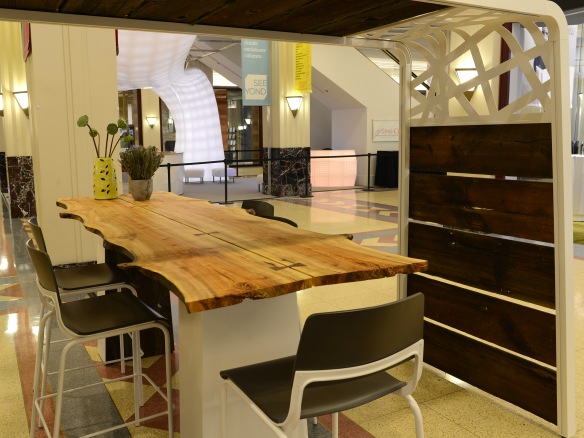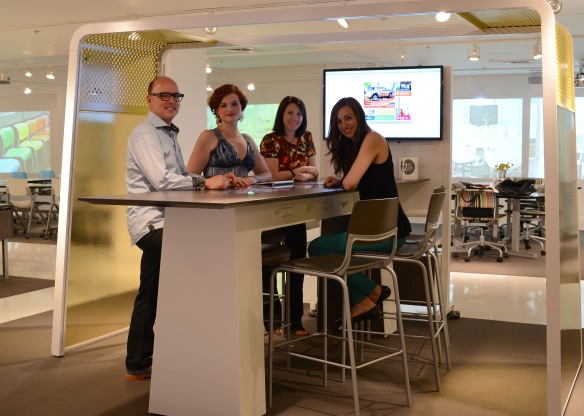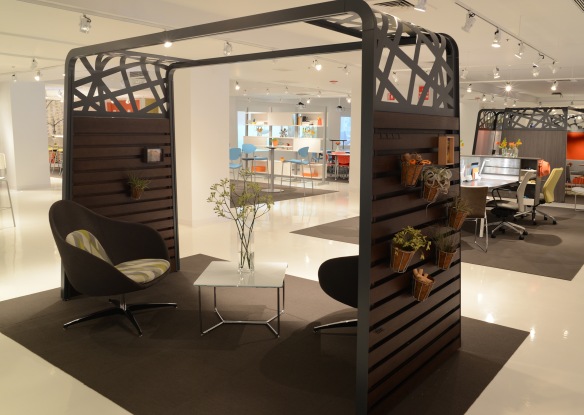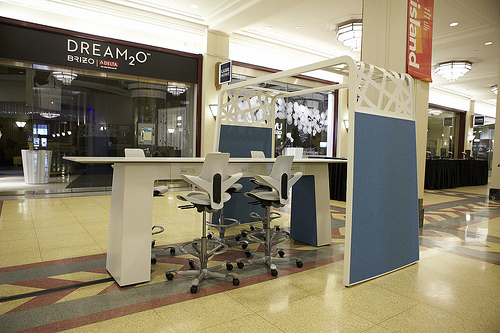Nemo Bar and Trellis interpretation by Chuck Saylor, in the lobby of the Merchandise Mart
We’ve all been there, whether we’re studying for an exam, creating a presentation, or brainstorming for a big project: Gradually our minds become stuck circling around a single thought, or they begin wandering off entirely, into unrelated territory.
Clearly it’s time for a getaway.
“So often, great ideas and profound beliefs and actions seem to be fueled and found when we take the time to reflect in an inspiring place,” says Chuck Saylor, founder and CEO of izzy+. “It’s why people go to off-site retreats in the woods, or by the sea. It’s why they take sabbaticals in the mountains to free up their thinking and recharge the batteries.”
Of course, some real travel to the Alps or the Caribbean would be nice (as we wrote about in Part I of this series), but Saylor is actually referring to less drastic methods of getting away—without leaving the building.
“Culturally, we are losing that ability to go offsite and reflect,” Saylor adds. “So we need to create inspiring spaces within the work environment that allow us to have that revelation, to relax our minds, to achieve those ‘aha’ moments.”
Research shows that just getting some geographic distance from your desk can yield refreshing results. They key is having a destination that makes you want to get up and move. This year’s izzy+ NeoCon showroom is designed around a variety of “inspired destinations.”
“A variety of inspired destinations in the workplace naturally encourages movement, and that contributes to a healthier, more social and more productive work environment,” explains Rick Glasser, Vice President of Marketing and Product Management for izzy+.
The Nemo Trellis embodies the idea of inspired destinations—places that make you want to get up and head for a change of scene, whether to have a casual meeting or refresh your sense of focus.
Of the three Nemo Trellis installations in this year’s showroom, two (pictured below) are concept designs created by young designers who won the izzy+ design challenge that was introduced as part of the Valentine’s Day promotion. Lindsey Salazar of Archideas in Chicago created a Trellis that blurs the boundaries between outdoor and indoor environments, while Eda Muco of Dyer Brown & Associates in Boston used a translucent material to play with the idea of boundaries without walls.
Another, more whimsical Nemo Bar and Trellis concept (pictured at the top of this post) is installed in the Merchandise Mart lobby, where weary NeoCon guests can take a few moments to sit down and refresh. This interpretation of the Trellis has a wheatgrass roof and reclaimed barnwood panels, while a massive cross-section of polished maple serves as the Bar’s surface.
“When people encounter the izzy+ spaces, I hope they will smile, I hope they will be surprised, and I hope that it will provoke some inspiring thoughts within them,” says Saylor. “There is a time for work and a time for leisure and reflection, a time to be introverted and a time to be extroverted and collaborate. It’s all about a healthy balance, and izzy+ will always be on that journey to find the right balance and to create the products and designs that support and inspire people.”










